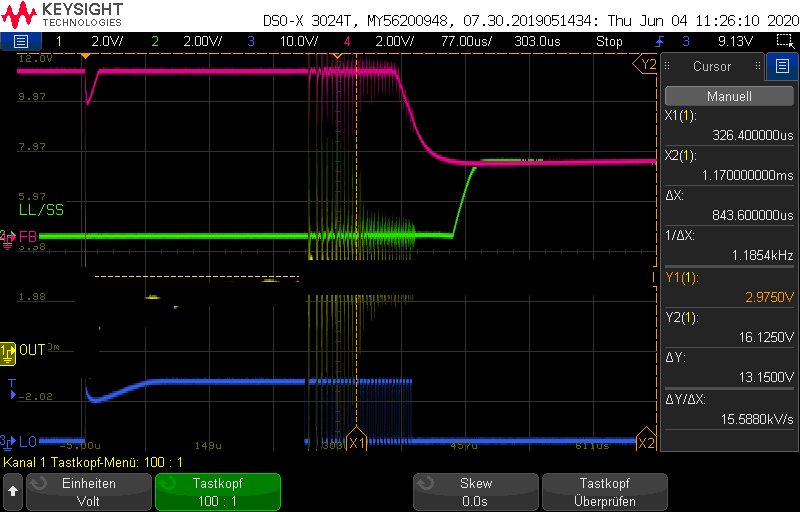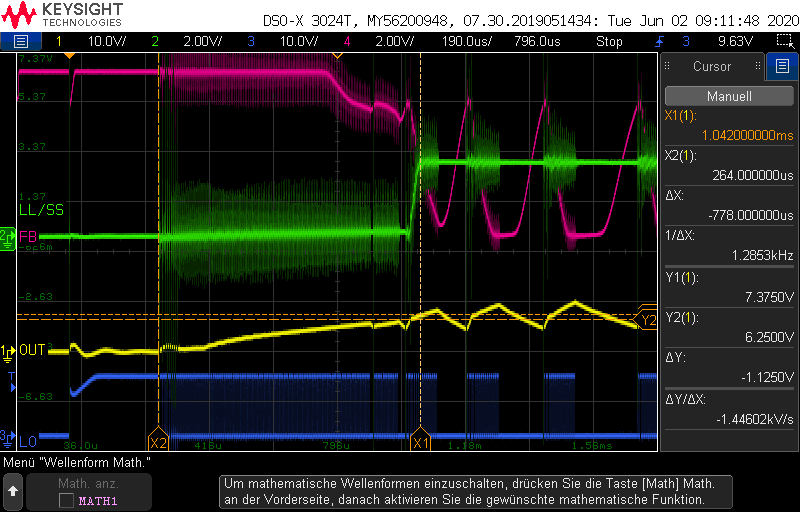Other Parts Discussed in Thread: UCC25630-1EVM-291, UCC25600
Hi,
during Soft-Start I get the following waveforms:
No-Load:
Full-Load:
Questions about SS at full-load:
1- why is the switching interrupted during SS?
2- why does SS end before FB<SS?
Questions about SS at no-load:
1- why does switching stop so early and even before SS is finished?
2- why does SS end before FB<SS?
Other than that I have problems with burst mode:
I removed the upper resistor at LL/SS pin to reduce burst mode threshold. But this doesn't work. Burst mode stays active even with full load! The figure below shows this state:
burst mode at full load:
After every 15 pulses, a very small burst off period is produced.
Tanks in advance.
Best regards,
Ehsan






